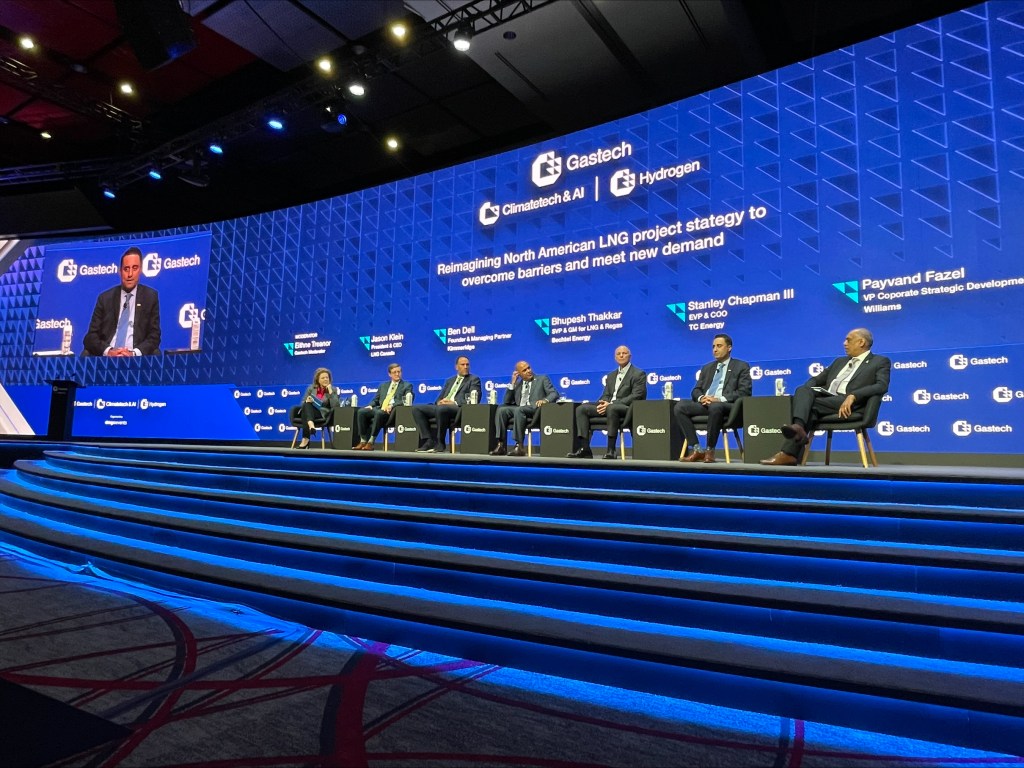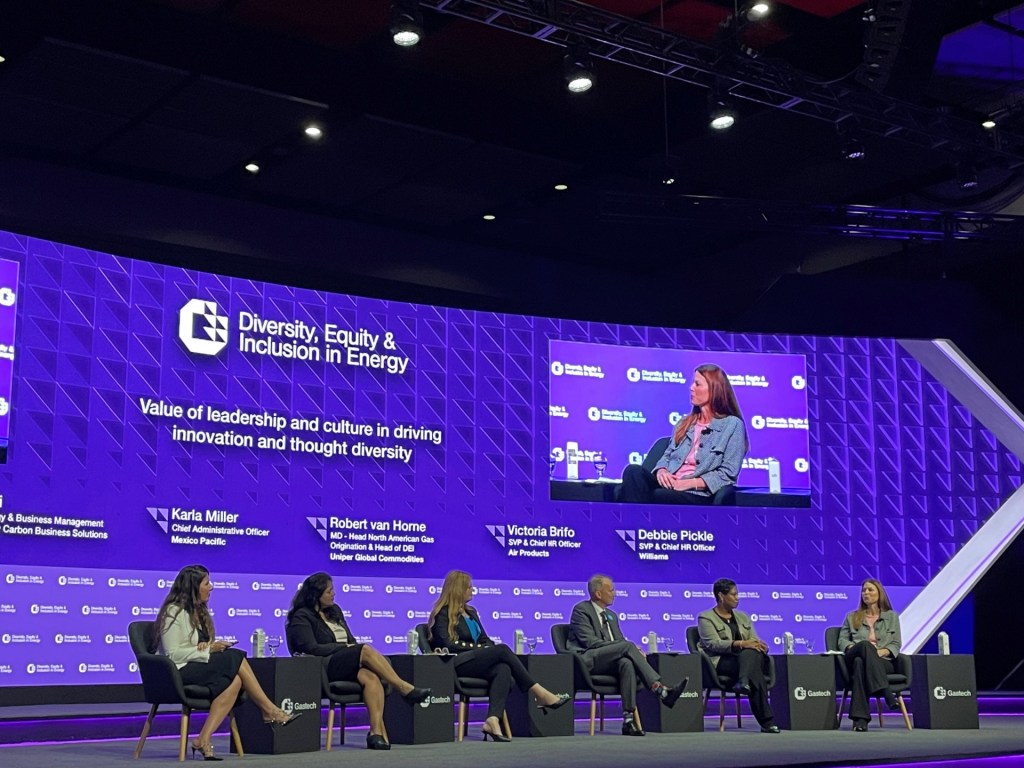Gastech, the world’s largest conference focused on natural gas, showcased an industry that is reducing emissions and embracing new technologies for a lower-carbon future. Williams executives were among attendees and panelists at the Houston event that drew energy leaders from around the globe.

“This is a pivotal time for our industry,” said Williams VP of Strategic Development Payvand Fazel, who spoke on a panel about LNG strategy. “AI and data center growth are accelerating energy demand like never before, and at the same time society is burning more coal than ever across the globe.”
“We must use the best tools available and continue to innovate,” he said. “Natural gas has been the single largest contributor to reducing emissions in the U.S. power sector by displacing coal over the last 20 years – and there’s so much more we can do.”
Natural gas is uniquely positioned to support the growth of solar and wind energy while providing the most competitive, low-emissions fuel on the world market. But a complex regulatory process is one of the biggest obstacles to unlocking vast U.S. natural gas reserves, preventing U.S. LNG exports from displacing higher-carbon fuels like coal and heating oil.
LNG exports are the main driver of U.S. natural gas demand growth and are expected to more than double over the next ten years despite the current pause on LNG export permits. An additional 15 billion cubic feet a day (Bcf/d) growth is expected, roughly the amount of natural gas the United Kingdom plus Germany consumed in 2023.
Electrify everything
At the same time LNG is growing, electricity demand is experiencing 10x faster growth per year this decade than in the previous decade, driven by the increase in large-scale data centers and electrification.

In an interview with S&P Global during Gastech, Williams’ EVP of Corporate Strategic Development Chad Zamarin said natural gas-fired power generation, along with natural gas storage, is essential to meet growing needs, especially during peak demand that intermittent renewables can’t fill.
As market participants seek more flexibility, Williams has acquired storage assets in the Rockies and Gulf Coast regions. The company also is exploring the prospect of greenfield storage projects, especially along the Gulf Coast, to build additional flexibility into the market.
“The way you produce 100 Bcf a day consistently, but you deliver into a market that is changing, is you flex with storage,” Zamarin said. “We’ve got to be able to absorb the volatility of LNG.”
Williams is well-positioned to meet this need, serving 12 key supply areas in the U.S. and handling about one-third of the nation’s natural gas.
With more than 5,600 employees, the company employs a bright and diverse talent pool to fuel the clean energy future, said Debbie Pickle, SVP and Chief Human Resources Officer, who spoke on a panel about leadership and culture.
“At Williams, we know that our people are essential to fueling a sustainable, clean energy future. We’re committed to fostering a culture that embraces diversity of thought, experiences and skills because it drives innovation and collaboration.”
